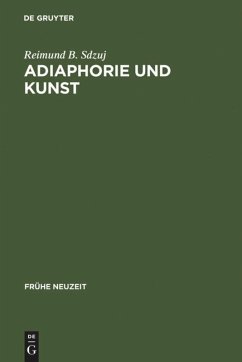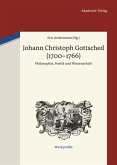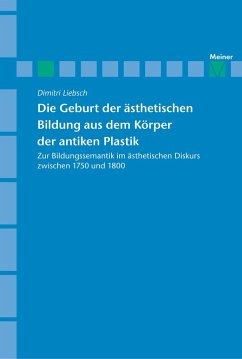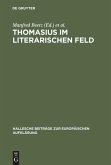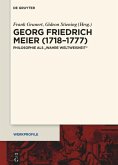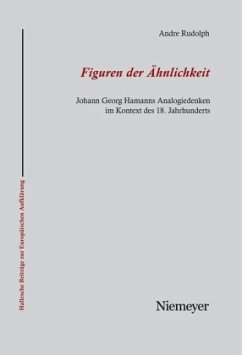The book investigates theories dating from the 13th to the 18th century on the moral indifference of human action with a view to substantiating the hypothesis of a heterogeneous genealogy of the specifically modern concept of 'aesthetics'. Aesthetic discourse on art did not develop of its own self and in its own right but was essentially based on genuinely moral-theological concepts (or concepts evolving in the context of moral theology) relating to the eventuality of human action being adiaphoric in origin. Both in methodological terms and in conjunction with its subject, this study proposes an aetiology, rather than a pre-history, of aesthetic thinking.
das Buch verfolgt den Prozess einer tiefgreifenden Wandlung des Kunstverständnisses: vom Verlust der religiös-kultischen Funktion, den die Kunst im protestantischen Raum des 16. Jahrhunderts als Adiaphorisierung erlebt, bis zur Begründung einer regelrechten philosophischen Disziplin namens >Aesthetica< und nachfolgend einer Kunst als neuer Religion im ausgehenden 18. Jahrhundert. Es versucht die Hypothese einer heterogonen Herkunft des spezifisch modernen 'Ästhetik'-Konzeptes, eines der bedeutsamsten und auffallendsten kulturellen Phänomene der Neuzeit, zu begründen. Erst durch die Rezeption scholastischer Theorien des Mittelalters über die Möglichkeit der religiösen und moralischen Indifferenz menschlicher Akte im Protestantismus konnte die ursprünglich streng theozentrische Weltorientierung der frühen Reformatoren und deren weltbezogene Entsprechung, das praktische Nützlichkeitsdenken, im Verlauf des 16. und 17. Jahrhunderts schrittweise überwunden werden, und zwar aus genuin theologischen Gründen. Diese Entwicklung, die man nicht als Säkularisierungsprozess beschreiben kann, schuf nicht nur Platz für unbefangenere Weisen der Weltzuwendung und des Weltgenusses; sie ermöglichte teilursächlich auch die Ausdifferenzierung eines autonomen Kunstdiskurses durch die Ansiedlung des Künstlerischen in der Sphäre des Adiaphorischen.
das Buch verfolgt den Prozess einer tiefgreifenden Wandlung des Kunstverständnisses: vom Verlust der religiös-kultischen Funktion, den die Kunst im protestantischen Raum des 16. Jahrhunderts als Adiaphorisierung erlebt, bis zur Begründung einer regelrechten philosophischen Disziplin namens >Aesthetica< und nachfolgend einer Kunst als neuer Religion im ausgehenden 18. Jahrhundert. Es versucht die Hypothese einer heterogonen Herkunft des spezifisch modernen 'Ästhetik'-Konzeptes, eines der bedeutsamsten und auffallendsten kulturellen Phänomene der Neuzeit, zu begründen. Erst durch die Rezeption scholastischer Theorien des Mittelalters über die Möglichkeit der religiösen und moralischen Indifferenz menschlicher Akte im Protestantismus konnte die ursprünglich streng theozentrische Weltorientierung der frühen Reformatoren und deren weltbezogene Entsprechung, das praktische Nützlichkeitsdenken, im Verlauf des 16. und 17. Jahrhunderts schrittweise überwunden werden, und zwar aus genuin theologischen Gründen. Diese Entwicklung, die man nicht als Säkularisierungsprozess beschreiben kann, schuf nicht nur Platz für unbefangenere Weisen der Weltzuwendung und des Weltgenusses; sie ermöglichte teilursächlich auch die Ausdifferenzierung eines autonomen Kunstdiskurses durch die Ansiedlung des Künstlerischen in der Sphäre des Adiaphorischen.

